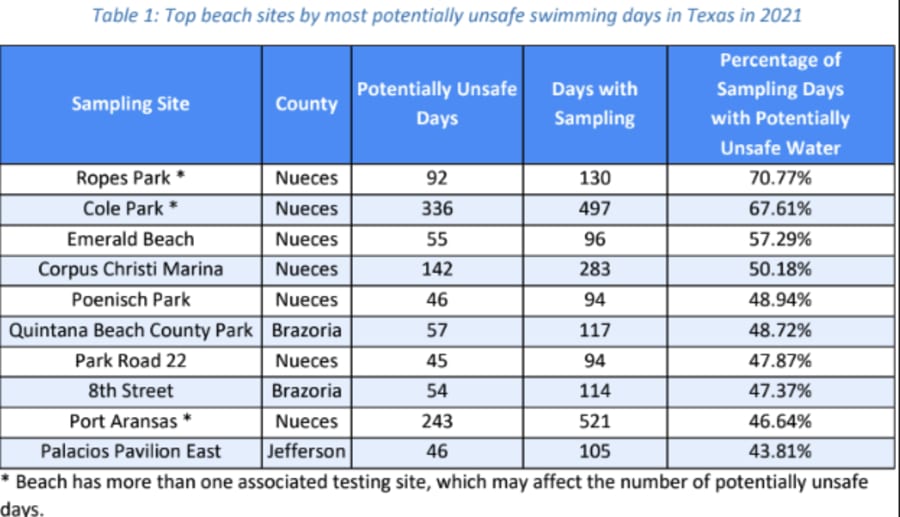A new report from Environment Texas states that pathogens pose a risk at the majority of Texas beaches.
“In 2021, all but 12 of 104 beaches were potentially unsafe for swimming on at least one day where they were tested,” according to the Safe for Swimming report.
Recommended Videos
“Even as Texans are trying to escape record heat at the beach this 4th of July, pollution is still plaguing too many of the places where we swim,” said Michal Lewis of the Environment Texas Research and Policy Center.
The Safe for Swimming report is part of the research center’s annual analysis of bacteria testing.
Whether you’re swimming, diving, or wading in these contaminated waters, the contaminants can still pose hazards to your health. According to the Environmental Protection Agency, contact with water that is contaminated with fecal bacteria can cause “gastrointestinal illness (such as diarrhea or vomiting), respiratory illness, and other health problems.”
“Our beaches are at risk. Human contact with water contaminated by fecal bacteria can result in gastrointestinal illness, respiratory disease, ear and eye infections, and skin rash. Each year in the U.S., swimmers suffer from an estimated 57 million cases of recreational waterborne illness,” according to the report.
The EPA uses something called “Beach Action Value” to determine a beach’s safety for swimming. The value is determined by the amount of E. coli in the water, combined with an estimated illness rate of 32 out of every 1,000 swimmers.
E. coli is a type of fecal bacteria.
“The sources of fecal contamination are urban runoff caused by unchecked development, sewage leaks and overflows from private and public systems, and manure runoff industrial-scale livestock operations,” the report states.
Ropes Park in Corpus Christi had bacteria levels above this safety threshold on 70 percent of days tested in 2021.

“Other Texas beaches found potentially unsafe for swimming over 50 percent of the time were Cole Park, Emerald Beach, and Corpus Christi Marina, all in Nueces County,” according to the press release.
An estimated 57 million instances are reported each year of people getting sick from swimming in oceans, lakes, rivers and ponds, Environment Texas officials said.
“Now is the time to fix our water infrastructure and stop the flow of pathogens to our beaches,” said Lewis.
The recent passage of the Infrastructure Investment and Jobs Act allocates $55 billion for investment in water infrastructure. Those improvements will help drinking water quality and set aside funds for wastewater infrastructure.
So how do you know where it’s safe to swim? A map provided by the Texas General Land Office, which oversees some public lands and beaches, monitors the fecal bacteria levels along the Texas coast, collecting samples and testing them for contamination.



